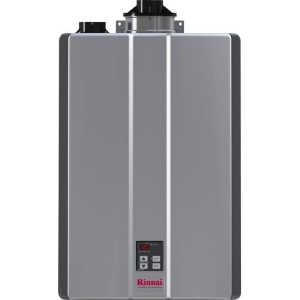How to Install a Thermal Expansion Tank
A step-by-step guide on how to install a thermal expansion tank in the home water heating system. How does it work, and why is it important to install one?
What is an expansion tank and how does it work?
 Expansion tank
Expansion tankThermal expansion tanks or expansion vessels are devices that are used in potable water and hydronic space heating to protect the system from excessive water pressure.
Expansion tanks are designed to receive a volume increase of the heated water, reduce the pressure and protect the system from failure. These devices contain the air membrane (diaphragm), usually made of rubber, pressurized with air on one side while on the other side is water from home plumbing.
As the water temperature and pressure increase, the air bladder expands, making room for water expansion from the water heater. As the temperature of water and pressure start decreasing, the diaphragm goes back to its design position, returning the cooled water to the heater.
Expansion vessels are used to receive extra volume of water in closed-loop systems, where the flow preventers and check valves are installed.
Note: When water is heated from 50 F to 120 F, the volume of water increases approximately by 2%.
The expansion tank must be appropriately sized, while the installed capacity depends on the size of the water heater.
Why it is essential to install an expansion tank
One of the most common problems when the expansion tank is not installed, and the pressure starts building up is water dripping dripping from the temperature and pressure relief valve (TPR valve). Due to the higher pressure, the expansion could affect the regular operation of the valve, waste the energy, shortened the unit's life, and become a potential safety hazard.
Since water is considered non-compressible, much bigger problems occur due to the extremely high water pressure. These problems include bulging water heater, tank rupture, dislocated air vent or gas and water fittings, leaking and other.
How to install a thermal expansion tank - Instructions
- Check the water pressure in your home. It should be close to 50 PSI. If it is higher than 80 PSI, install the pressure reducing valve.
- Check the pressure of the air inside the thermal expansion tank. The pressure should be equal to the maximum water pressure in your home. Use the hand pump to increase the air pressure if needed.
- It is recommended to install a thermal expansion tank on the cold water line, horizontally and close to the water heater.
- Use the threaded T- fitting, Teflon tape, and pipe wrench to make the watertight connection.
- Remove the trapped air by opening the hot water tap.
How to check if the expansion tank working
We will assume that the expansion tank is using the diaphragm, separating water and air. It is installed on the cold side of the water supply line.
Tap on both the upper and lower part of the tank. When you tap on the upper part, it should sound hollow. If you hear a thud sound, then the upper chamber is filled with water, indicating that the diaphragm is damaged.
You can also check the temperature of the outside tank surface by touching the top and bottom of the device. It should be cold on the tap, where the air is located, and warm on the bottom, where warm water from the tank is stored.
Use the manometer to check the pressure inside the expansion tank. The reading should be per the manufacturer's specs.
If the pressure inside the water heater tank is high and the expansion tank is not working correctly, the TPR valve will be dripping.
Sizing tips and calculators
Did you know that you can use an online calculator to calculate the size of an expansion tank?
The westank.com website has one; you have to provide information such as:
- Water heater volume (capacity)
- The low temperature of the incoming water
- High temperature or the maximum temperature of the outgoing water
- The initial pressure of the incoming water
- Final pressure or maximum desired
Most of the expansion tanks for home use have a capacity of between 2 and 5 gallons. If you are not sure about the size, it is better to install an oversized expansion tank. If you install a smaller expansion tank than required, the excess pressure will cause relief valve discharge.
Conclusion
Installing an expansion tank is a DIY home project that any handyman can do for a short period. Expansion vessels are not expensive to purchase – they cost somewhere between $20 and $100. Also, you need some copper pipes and soldering material or galvanized pipe and fittings for installation.
No matter if the house you live in has a closed or open water supply system, install it, as the device will protect the system not only from thermal expansion and high pressure, but permanent damages to the heater and heating system.


